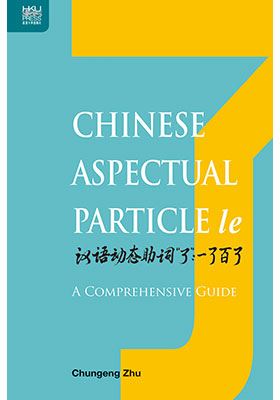Chinese Aspectual Particle le
A Comprehensive Guide
(汉语动态助词“了”:一了百了)
ISBN : 978-988-8528-10-3
October 2019
232 pages, 6″ x 9″
- HK$425.00
Ebooks
The Chinese language has no tense but has aspects. It relies on aspectual particles to express how an action or state relates to the flow of time. Among all Chinese aspectual particles, le (了) is the most frequently used and is notoriously elusive for non-native speakers to grasp.
Chinese Aspectual Particle le: A Comprehensive Guide is entirely devoted to le. It presents a systematic analysis of le and includes detailed illustrations of its usage. Breaking le down into le₁ and le₂, this book illustrates how le₁ forms the perfective aspect: when it is obligatory, incompatible, or optional, and when le can be interchangeable with guo (过) and zhe (着). It shows how le₂ denotes a change of state, performs as a modal particle, and is used in discourse. By comparing Chinese grammar with that of English whenever relevant, the book makes the usage of le more assessible to English speakers. It also contains a plethora of illustrative sentences, a wide range of vocabulary, and abundant cultural information.
“This book is designed to demystify and clarify the various usages of the particle le for English speakers. With great clarity, the author addresses certain misunderstandings and simplistic characterizations of Chinese grammar that have plagued students for decades. Especially helpful are the examples, which are idiomatic and natural, enabling students to obtain that elusive ‘feeling for the language’ that is essential to speaking fluently.” —David Moser, associate dean at the Yenching Academy, Peking University
“Le is one of the most frequently used words in Chinese, yet it rarely becomes an exclusive theme of a book. In this monograph, Chungeng Zhu explains le in a reader-friendly manner with interesting examples and insightful comments, offering a significant contribution to Chinese linguistics and Chinese teaching and learning.” —Yang Zhao, professor and dean, School of Chinese as a Second Language, Peking University



